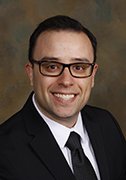Not for the Faint of Heart: Functional Radiosurgery
S Braunstein1*, G Kim2*, D Schlesinger3*, (1) University of California San Francisco, San Francisco, CA, (2) University of California, San Diego, La Jolla, CA, (3) University of Virginia Health Systems, Charlottesville, VA
Presentations
1:15 PM Functional Radiosurgery Using the Linear Accelerator - G Kim, Presenting Author
1:30 PM Functional Radiosurgery with Gamma Knife - D Schlesinger, Presenting Author
1:45 PM Q&A - D Schlesinger, Presenting Author
TH-C-TRACK 7-0 (Thursday, 7/29/2021) 1:00 PM - 2:00 PM [Eastern Time (GMT-4)]
Functional radiosurgery procedures involve targeting morphologically normal brain anatomy with extremely high (80 Gy-160 Gy maximum) doses in order to lesion or selectively inhibit neurological activity to treat disorders such as trigeminal neuralgia, essential tremor, and obsessive-compulsive disorder. The techniques and acceptable procedural uncertainties for functional radiosurgery can differ substantially as compared to the more common radiosurgical indications for solid tumors and vascular malformations.
This session will introduce the clinical indications and rationale for functional radiosurgery, as well as the technical considerations for safely performing these radiosurgery procedures across different radiosurgery delivery platforms. In particular, speakers will provide a historical overview of functional radiosurgery; modern clinical indications; imaging, visualization, and treatment planning techniques; and quality assurance on various delivery platforms to ensure the required level of accuracy and precision. The session will highlight the differences between more common radiosurgical techniques used for tumors and vascular malformations and those required for functional radiosurgery.
Learning objectives
1. To enumerate the clinical indications treated with functional radiosurgery and published clinical outcomes.
2. To understand the significant differences between functional radiosurgery and radiosurgery as practiced for tumors/vascular malformations in terms of targeted tissue, dose, and acceptable uncertainties
3. To gain an understanding of how functional radiosurgery can be delivered on different SRS platforms, including imaging/visualization techniques, beam configurations, and quality assurance.
Handouts
- 166-57815-15651646-176578-2055936079.pdf (Steve Braunstein)
- 166-57817-15651646-171665-1858321283.pdf (David Schlesinger)
Keywords
Not Applicable / None Entered.
Taxonomy
Not Applicable / None Entered.
Contact Email









